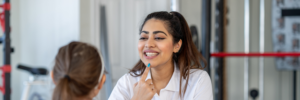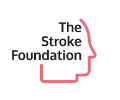Written By: Aundrea Steenblock, OTD, OTR
Falls and injuries are common occurrences after someone has experienced a stroke. According to the CDC, injuries occur in 1 out of 5 falls leading to a serious injury like a broken bone or head injury. Fall prevention is key in preventing future hospitalizations and further complications after having a stroke. Stroke survivors and their caregivers can be taught techniques to reduce the likelihood of falls.
The first place to prevent falls from occurring is while a stroke survivor is still in the hospital. Here are some practical tips for fall prevention:
Preventing Falls in the Hospital:
- Always ask for help prior to getting up! Your healthcare provider will provide assistance or supervision to ensure safety after having a stroke.
- Report symptoms that are likely to cause a fall including lightheadedness, dizziness, or vision changes.
- Use a mobility device that is recommended by your physical or occupational therapist. This device could be a wheelchair, walker, hemi-walker, or cane.
- Wear non-skid footwear at all times when standing to prevent slipping.
After transitioning back home, it is critical to a stroke survivor to reduce the risk of falling. Your occupational or physical therapist can provide personalized tips in modifying your home environment to prevent falls. Here are some other practical tips:
Preventing Falls in Different Areas of Your Home:
- Entryway
- If you have stairs to enter your home, your physical therapist may recommend installing a handrail to maintain your balance. If this option is unsafe, your physical therapist may recommend installing a ramp.
- Check your stairs to make sure they are even and free from cracks or holes.
- Remove any rugs that come up when you try to walk over them.
- Make sure you have proper lighting for nighttime.
- Bathroom
- Use a shower chair, tub transfer bench, or 3-in-1 shower chair. Your occupational therapist will provide personalized recommendations based on your abilities and bathroom set-up.
- Install grab bars where appropriate. This will likely be next to the toilet, where you enter the shower, and in the shower. Suction grab bars ARE NOT safe.
- Install a hand-held shower head that will allow you to sit while showering.
- Your toilet may need equipment installed for safety. This might include a toilet riser, toilet safety frame, or 3-in-1 commode. Your occupational therapist can give you personalized recommendations.
- Have nightlights installed for improved visibility during nighttime bathroom trips.
- Always ask for help when needed to go to the bathroom!
- Living Room
- Remove clutter from your home to prevent tripping on objects.
- Pick up throw rugs so you do not trip over them when you walk over them.
- Remove any cords that are in your walkway to prevent falling.
- You may have trouble standing from a lower surface. You can use a cushion or a taller chair to assist you with standing. It also helps to have an armrest to push off while standing.
- Kitchen
- Have a sturdy chair with arm rests to sit in while eating.
- Move most commonly used objects where they are easy to reach.
- Remove throw rugs to prevent tripping.
- Make easy meals with fewer ingredients to conserve your energy.
Most falls are preventable and there are some general steps a stroke survivor can take to help prevent falls.
General Fall Prevention Tips:
- Maintain an active lifestyle. It is important to be as active as you can be to help maintain and build your strength after experiencing a stroke.
- Balance is key. Talk to your physical therapist about specific balance exercises you should be performing.
- Don’t be afraid to ask for help. A lot of stroke survivors are not used to asking for help, but it is a critical step in fall prevention.
- Get your vision checked. Vision is often affected after experiencing a stroke, so it is important to get checked to see if you have had any changes.
Falls are common after a stroke, but they are preventable if a stroke survivor takes the right steps. Falls can lead to further injury or disability, so it is important to prevent falls when possible. If your loved one is struggling with frequent falls, contact your physician to obtain medical professional help.




